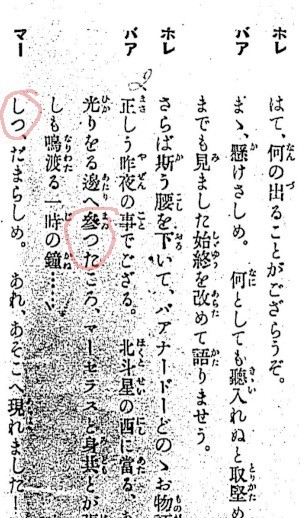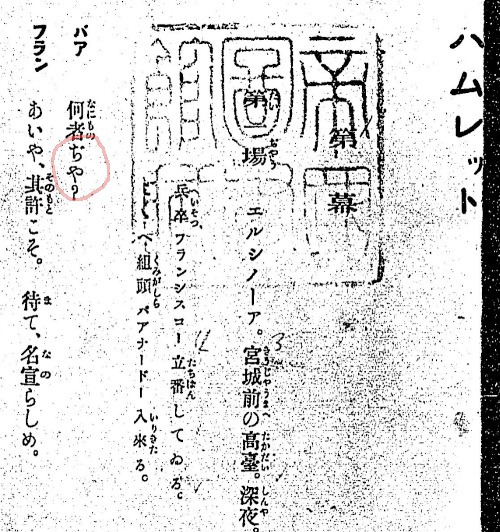It seems likely it was what would have been a small つ (sokuon)for sokuon printed or written in the normal size, where you would write a small つ now. That would make itthe word hakatte or tabakatte (謀って). 謀ちて vsand 謀つて are visually a bit too dissimilar to because a typo.
The hiragana size confusion was common in early modern Japanese printing. (IfIn fact, if I recall it correctly, the "confusion" was more of a standard rather than an error and it was up to the reader to disambiguate.)
I don't know which version you are reading, but in the Meiji 42 version, it is not an isolated example. It seems clear that the typesetter didn't have/use small hiragana for the body text. You In other parts of the book, you can see しつ and 何者ぢや in it. They used ruby text and small katakana (as in ッ in ハムレット), though.


